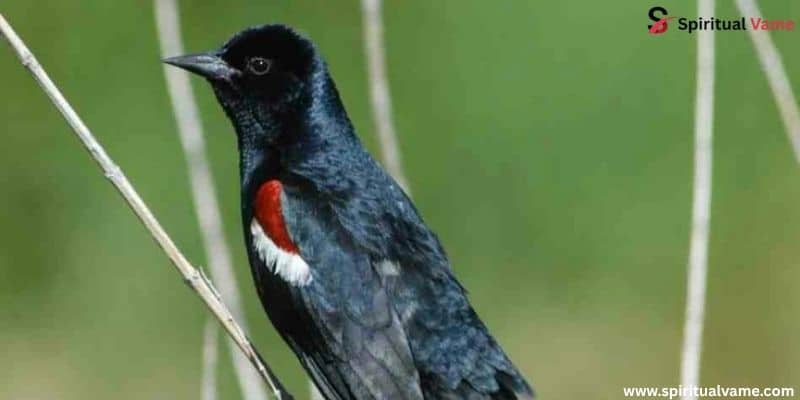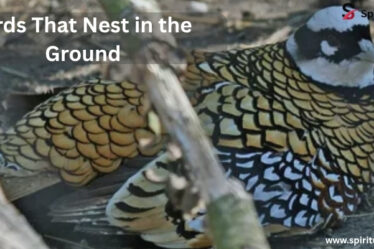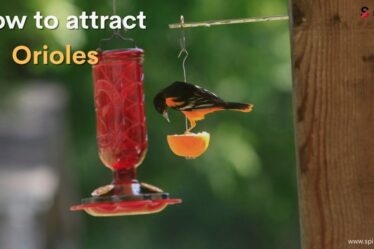
When you picture the wildlife of California, it’s easy to focus on its forests, beaches, or deserts. But one group of birds quietly fills every part of the state with color, sound, and energy—blackbirds. From city parks to remote marshes, blackbirds are a common sight in California. Some sing bold, musical calls from the treetops. Others nest in huge groups near wetlands. If you’ve seen a blackbird in California, you’ve likely spotted one of four main types, each with its own story, appearance, and role in the local ecosystem.
California’s climate and varied landscapes—mountains, coasts, farmlands, and rivers—make it a perfect place for blackbirds to live. These birds are part of everyday life here, yet many people don’t know just how important they are. In this article, you’ll learn everything you need to know about blackbirds in California. From the Red-winged Blackbird to the intelligent American Crow, we’ll explore how these birds live, where they thrive, and how we can all help protect them.
Diversity of Blackbirds in California
The blackbird family in California is more diverse than many realize. It includes different species that may look similar at first but behave in very different ways. While their feathers are mostly black or brownish, their personalities and lifestyles are far from dull. You’ll find some blackbirds that prefer rural marshes, while others are happy to pick up crumbs from a sidewalk café. Whether they’re singing from reeds or nesting in parking lots, each bird adds something special to California’s birdlife.
These blackbirds belong to various species with different names and scientific classifications. You’ll meet the Red-winged Blackbird (Agelaius phoeniceus), known for its bright shoulder patches and wetland songs. Then there’s the Tricolored Blackbird (Agelaius tricolor), which forms massive nesting groups in fields. Brewer’s Blackbird (Euphagus cyanocephalus) is the urban expert, and the American Crow (Corvus brachyrhynchos) stands out with its intelligence and large wingspan. These four are the most seen and heard across the state, each with a strong connection to their environment and the people who share space with them.
1. Red-winged Blackbird:
The Red-winged Blackbird is one of the most recognizable birds in California. You can often spot the male with his glossy black feathers and red and yellow shoulder patches, which he shows off proudly during mating season. These shoulder patches are a sign of strength, used to attract mates and warn off rivals. The females, on the other hand, look very different with brownish feathers and streaks that help them blend into their surroundings. If you hear a loud, sharp song coming from a marsh, it’s likely a Red-winged Blackbird announcing his territory.
These birds love wetlands, marshes, and areas with shallow water and thick plants. They’re about 6.7–9.1 inches long (17–23 cm) with a wingspan of 12.2–15.8 inches (31–40 cm). Their nesting season begins in spring, and you’ll often see them sitting on tall grasses or reeds, singing their musical calls. Because they’re so bold and loud, they often seem like the leaders of the marsh. They also play an important role in controlling insect populations and spreading seeds, helping their habitat stay balanced.
2. Tricolored Blackbird:

Another important blackbird in California is the Tricolored Blackbird, a close cousin of the red-winged. It may look similar at first glance, but its shoulder patches have a striking white bar instead of yellow. This bird, known scientifically as Agelaius tricolor, is found almost only in California and nearby states, making it truly special. Unlike other birds that live alone or in pairs, Tricolored Blackbirds love company. They build nests in giant colonies, often in dense vegetation close to water.
They are medium-sized birds, with a length of 7.5–9 inches (19–23 cm) and a wingspan of 12–15 inches (31–40 cm). Their biggest challenge is habitat loss. As farms and cities grow, their favorite nesting spots—wetlands and grasslands—are disappearing. That’s why conservation efforts have become so important. Without help, this bird could become rare or even endangered. Protecting their nesting areas is key to making sure they survive for future generations.
3. Brewer’s Blackbird:
Unlike its marsh-loving cousins, the Brewer’s Blackbird is right at home in busy urban areas. You’ll see them in parking lots, on sidewalks, or near picnic tables in city parks. The males have a shiny glossy black body with hints of green or purple in the sunlight, while the females are a soft brownish-gray. These birds are survivors. They’ll eat just about anything—insects, seeds, and even human food scraps—which helps them thrive almost everywhere.
The Brewer’s Blackbird, or Euphagus cyanocephalus, is about 8.3–9.8 inches long (21–25 cm) with a wingspan of 14.6 inches (37 cm). They usually nest in small groups and are very alert birds. If one sees danger, it quickly alerts the others. This smart behavior makes it easier for the flock to stay safe. Despite their common appearance, these blackbirds are an important part of California’s bird population, especially in cities and towns where other species struggle to survive.
4. American Crow:

Though not a true blackbird, the American Crow often gets included because of its similar black color and large presence across the state. It is a brilliant bird—known for its intelligence, problem-solving skills, and the ability to mimic sounds. You might see a crow dropping nuts on a road for cars to crack, or using tools like sticks to dig food from cracks. These crows are everywhere—from rural farmlands to urban centers like San Francisco and San Diego.
Scientifically called Corvus brachyrhynchos, the American Crow is much larger than other blackbirds. Its length ranges from 15.8–20.9 inches (40–53 cm) with a wingspan of 33.5–39.4 inches (85–100 cm). Its stout bill and fan-shaped tail help it fly and eat efficiently. They often live in family groups and are loyal to their territory. Besides being clever, they also help clean the environment by eating waste and dead animals. They’re a big part of nature’s clean-up crew.
Blackbirds’ Homes in California:
California gives blackbirds a variety of places to live, from wetlands and grasslands to city streets and backyards. Wetlands, in particular, are a favorite for Red-winged and Tricolored Blackbirds, who need thick reeds and shallow water for nesting. But not all blackbirds stick to the wild. Birds like the Brewer’s Blackbird and American Crow are highly adaptable and often found near people, even in noisy places.
Unfortunately, the places blackbirds call home are changing. Urban development, farming, and pollution have reduced the size and quality of their habitats. When a wetland is drained or a field is paved over, the birds lose their food, safety, and nesting sites. This is especially dangerous for species like the Tricolored Blackbird, which relies on large, open fields and natural habitats to raise its young. Protecting these areas is not just good for birds—it helps keep California’s ecosystems balanced and healthy.
Helping Blackbirds in California:
Luckily, people across California are working hard to protect blackbirds and the places they live. From farmers to wildlife groups, conservation efforts are growing stronger every year. One great example is bird-friendly farming, where rice growers flood their fields at the right time of year to give blackbirds a safe place to feed and nest. These small changes can make a big difference.
State and national organizations also play a role in preserving nesting sites and protecting endangered populations. The California Department of Fish and Wildlife supports programs that focus on habitat restoration, especially in areas once rich in wetlands. Volunteers and scientists often work together to track bird populations, gather data, and find new ways to help these birds thrive. Every action, big or small, adds to the long-term survival of California’s beloved blackbirds.
How Everyone Helps Blackbirds:

You don’t need to be a scientist to make a difference for blackbirds in California. In fact, some of the most helpful actions happen in regular neighborhoods. By planting native plants and keeping bird feeders clean and filled, people can turn their yards into safe spaces for local birds. Reducing pesticide use also helps, since blackbirds often eat insects and seeds from the ground.
Joining birdwatching apps like eBird, or taking part in an Audubon bird count, lets people across the country contribute to bird conservation. Even kids can get involved by learning about birds at school and encouraging their families to care for nature. Every person who helps makes it easier for blackbirds to live and raise families safely. Community support really does have a powerful effect.
What’s Next for Blackbirds?
The future of blackbirds in California depends on how we treat their land and respect their role in nature. While some species, like the Brewer’s Blackbird, are doing fine, others like the Tricolored Blackbird still face serious threats. As climate change and development continue, the challenge will be protecting enough wild space for these birds to feed, breed, and thrive.
Still, there are signs of hope. Thanks to better science and growing public interest, new ideas and technologies are helping protect bird habitats. With more people learning and caring, the outlook for blackbirds is brighter than before. These birds have adapted to changing times again and again. With your help, they’ll keep filling California’s skies with song for years to come.
Conclusion
The blackbird in California is more than just a common bird. It’s a big part of the state’s nature and beauty. You can find a blackbird in California near wetlands, in cities, or on farms. Each blackbird in California plays a role in the environment. Some eat bugs, others help spread seeds, and all add music to the outdoors. Protecting the blackbird in California means saving its home. We can all help by caring for nature and learning about these birds. The blackbird in California needs our support to thrive. When we help, we make sure the blackbird in California stays for future generations to enjoy.



